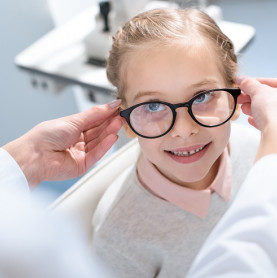Throughout the pandemic, children learned remotely and many experienced limited time outside the home. As a result, researchers say that may have harmed many children’s eyesight.
What was the focus of the study?
The study conducted by the Sun Yat-sen University School of Public Health includes data from more than 2,000 children. About 13% of 6 and 7-year-olds who had eye exams in 2018 developed nearsightedness by 2019. But from 2019 to 2020, the study shows 20% of children who had eye exams developed nearsightedness. The results were most significant among children under age 9, whose eyes are still developing and are more susceptible to environmental effects.
While this study did not examine the specific relationship between nearsightedness and time spent viewing screens, many ophthalmologists suspect reduced time outdoors and more time with computers and cellphones is a significant factor. That’s because time playing outside causes children to focus on things in the distance, which helps develop long distance vision. The experts also say the pandemic prevented families from bringing their children in for regular eye appointments, which may have led to late intervention in worsening vision.
How does screen time affect vision?
When children and adults use phones, computers or TV screens, blinking tends to slow down. That prevents moisture from lubricating the surface of the eye, leading to strain. Early childhood is the most critical time for a child’s vision development. Blurred vision can prevent the brain’s visual system from developing properly, which leads to permanent problems later in life.
What can I do for my child now?
- The research shows that time spent outdoors may be linked to a lower risk for myopia, which is the term for nearsightedness. Encourage your child to spend at least an hour outside each day.
- Using bigger screens and positioning the screen further away from your child’s eyes can be helpful, as well. Prevent your child from using a phone or tablet while lying down or reclining, which might cause them to bring the device closer to their eyes and cause neck and back ache.
- Follow the 20-20-20 rule: Take breaks every 20 minutes and shift eyes to look at an object at least 20 feet away for at least 20 seconds.
- Schedule regular visits with your child’s eye doctor to get a professional opinion on your child’s vision development.
Check out the many outdoors activity ideas we’ve shared through our Strengthening Families blog:
– Bird feeder craft and bird watching


